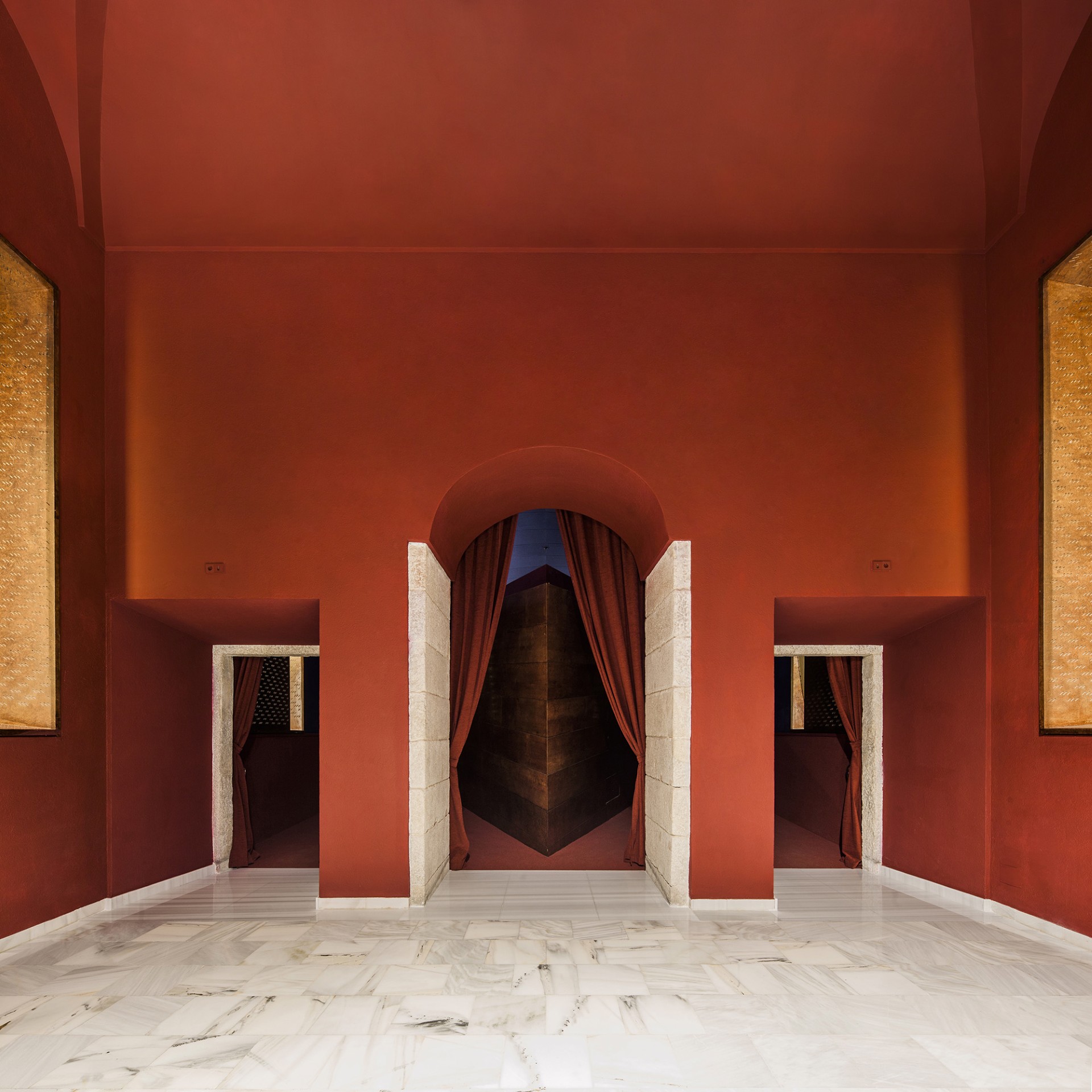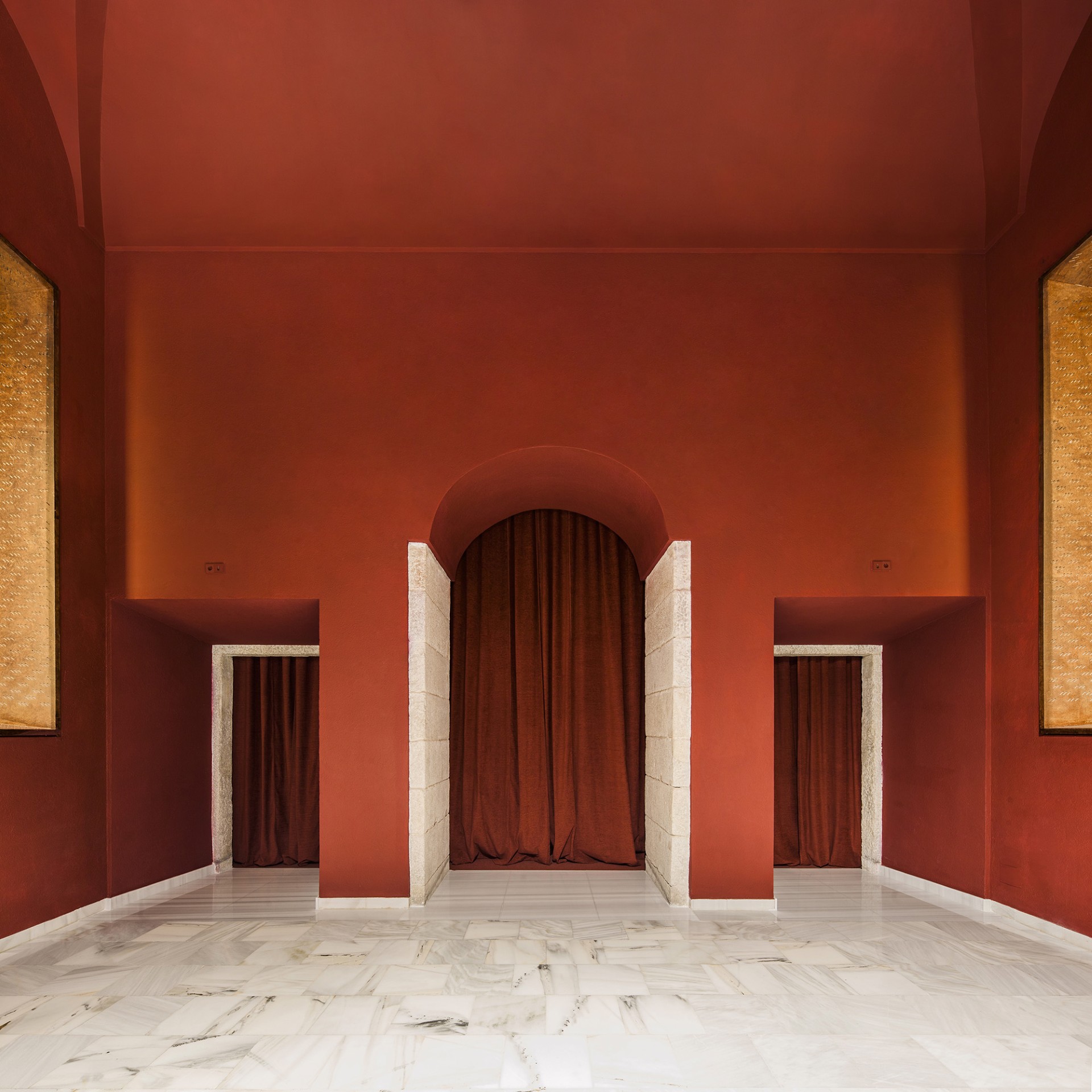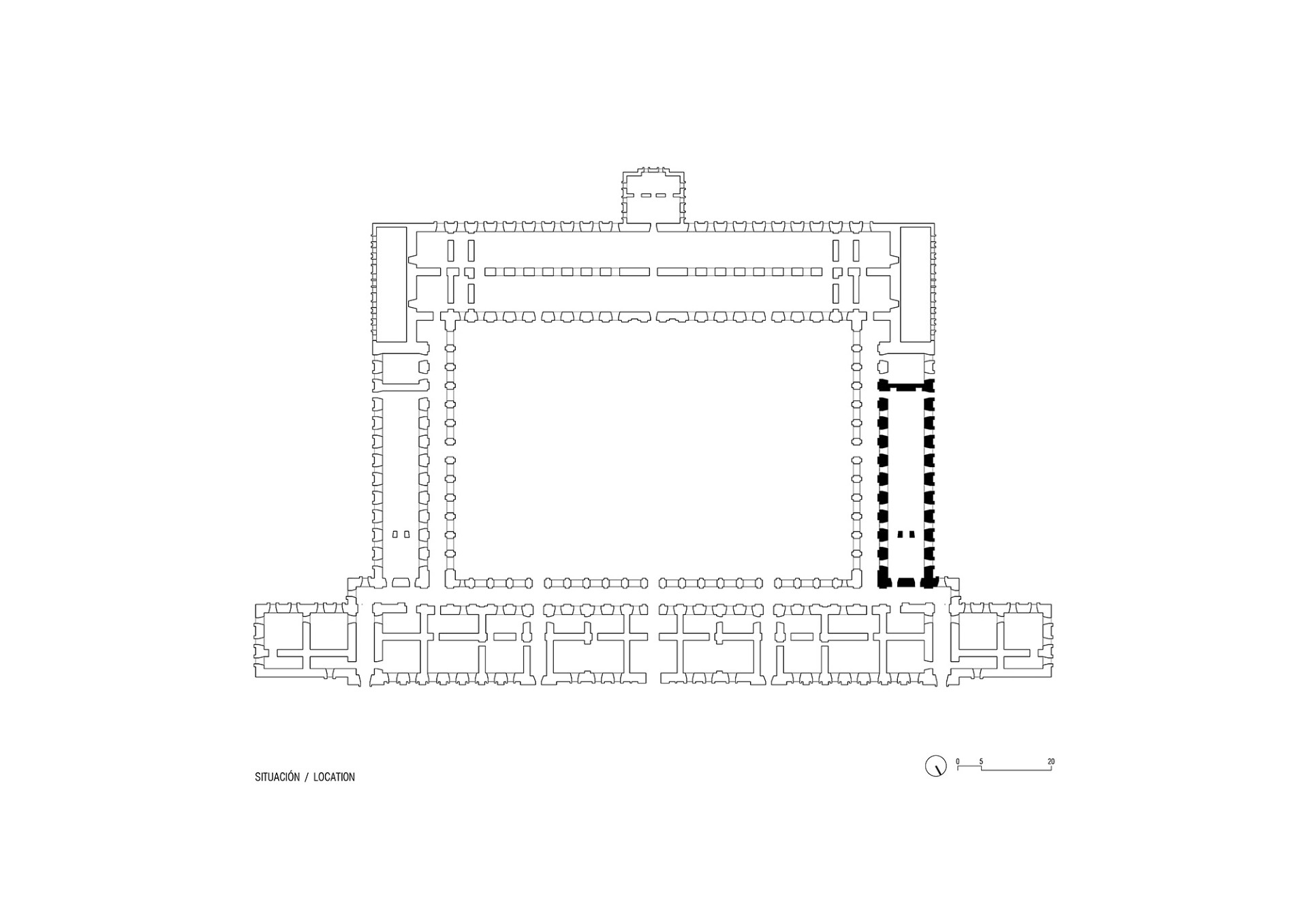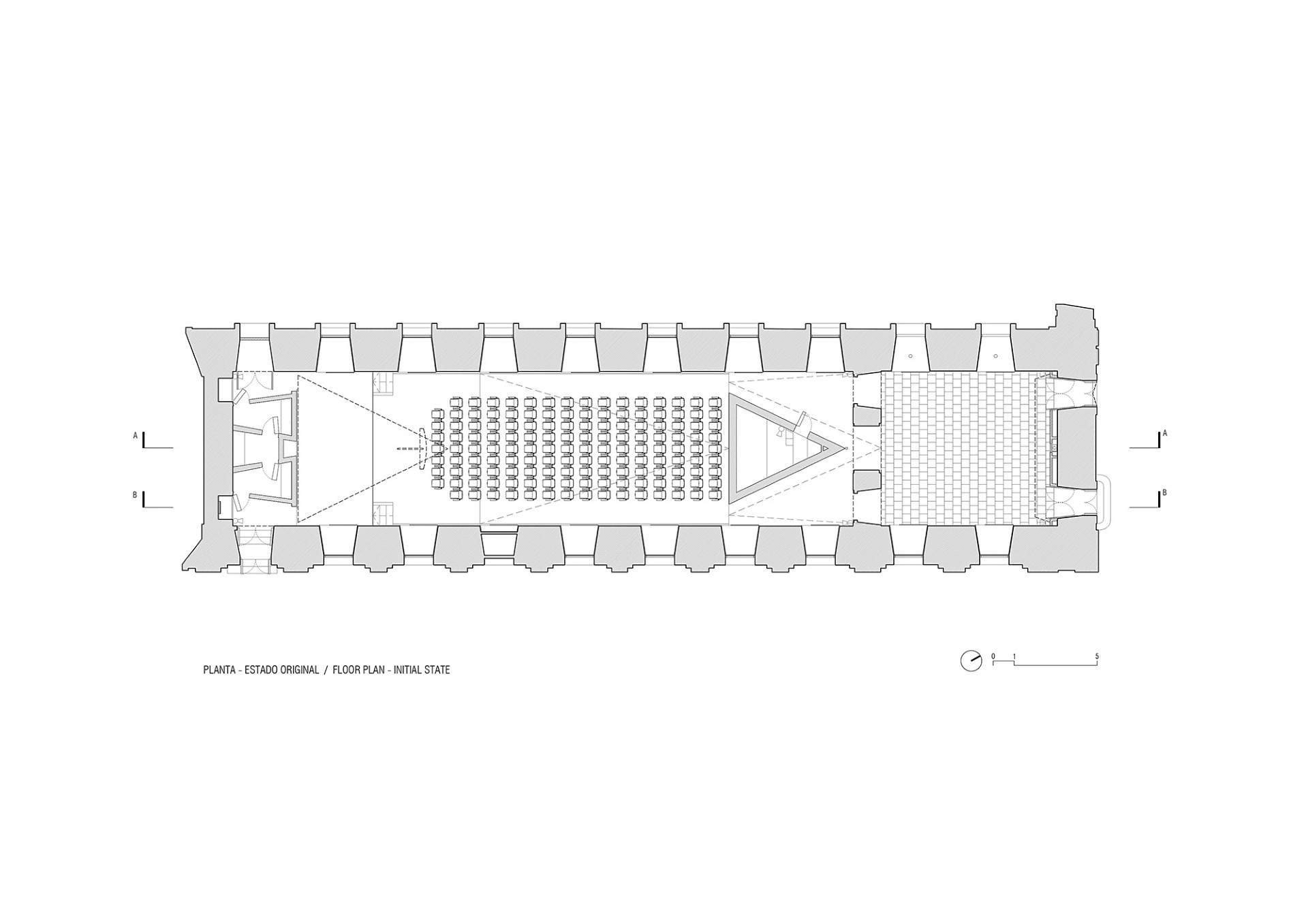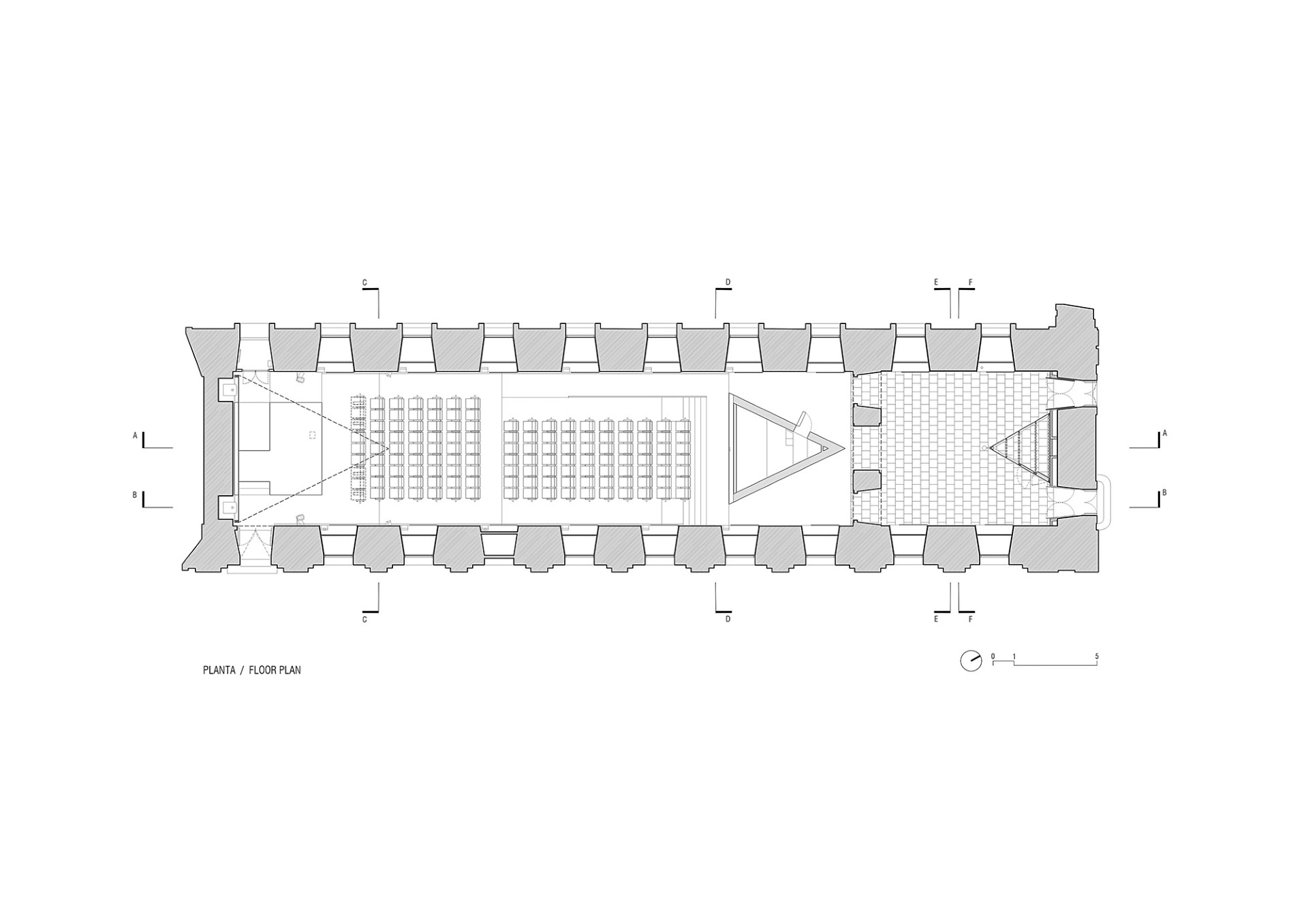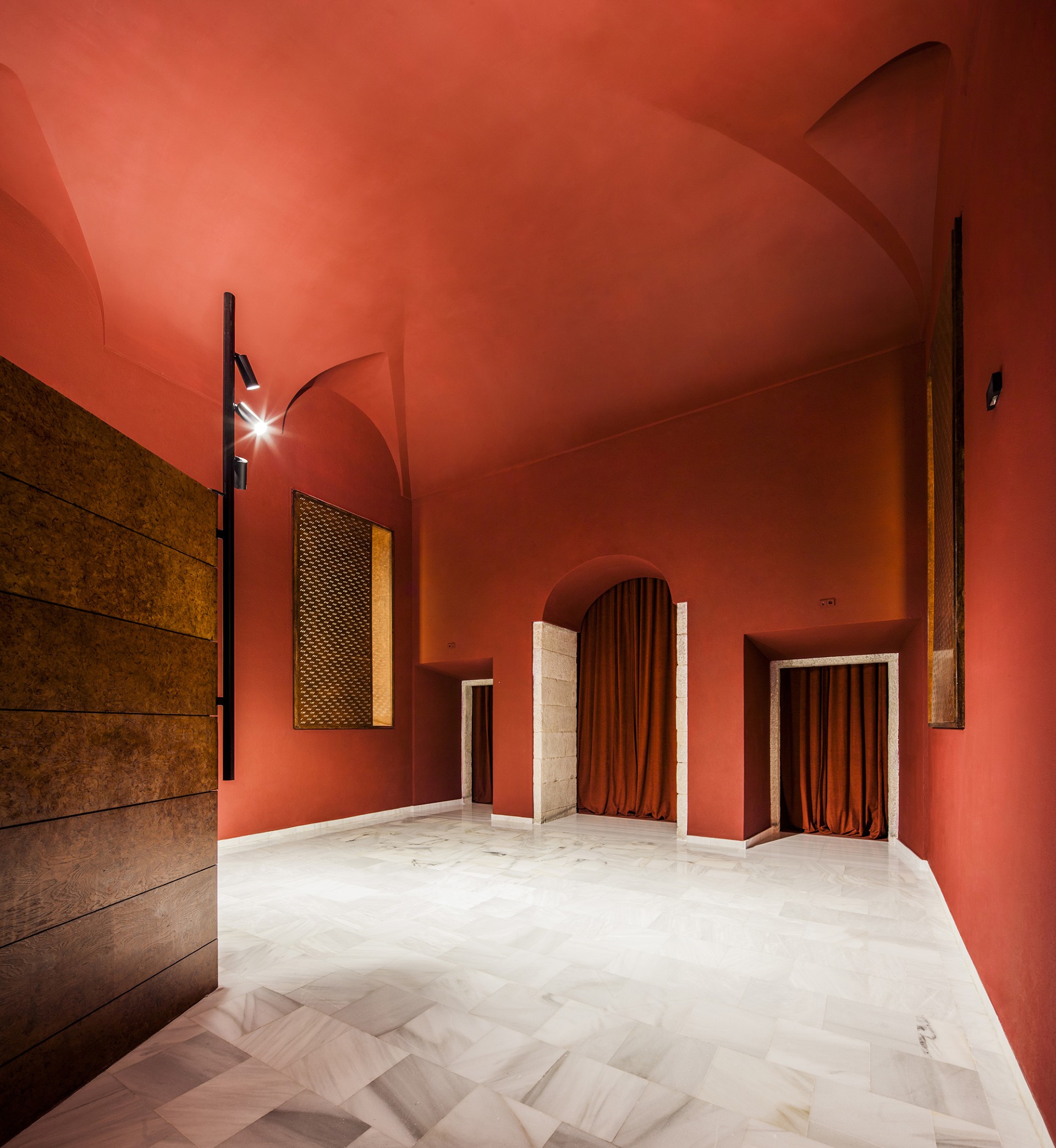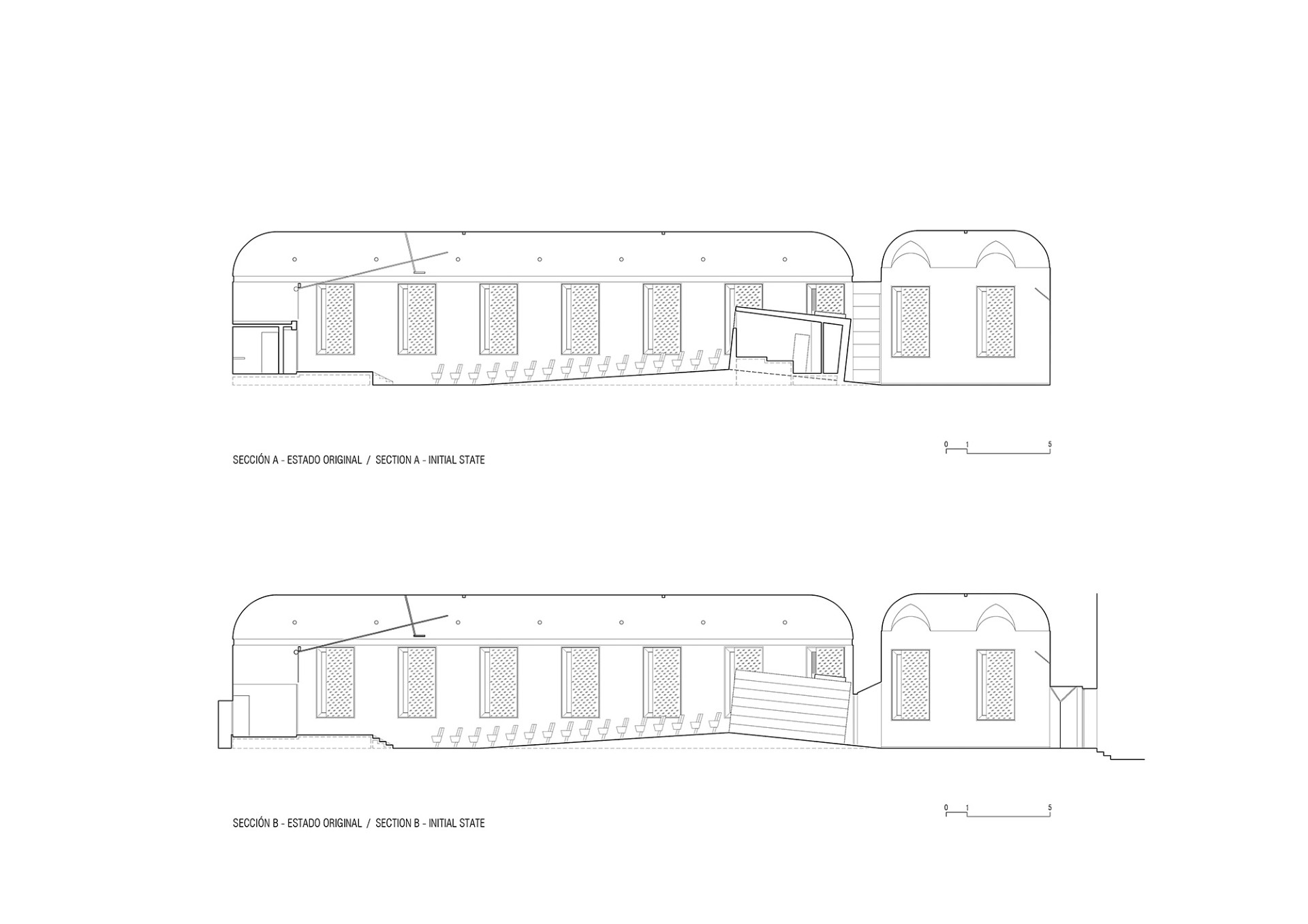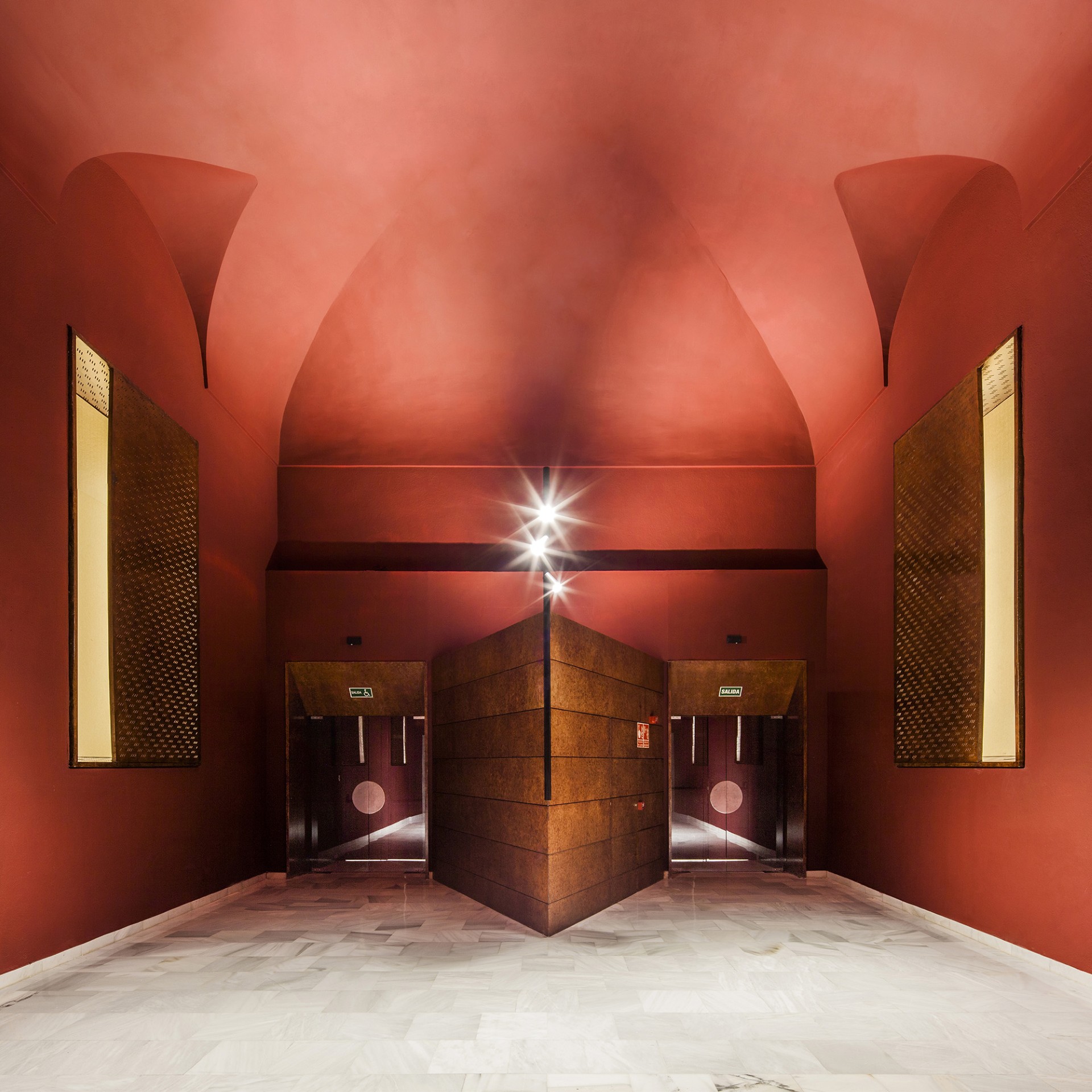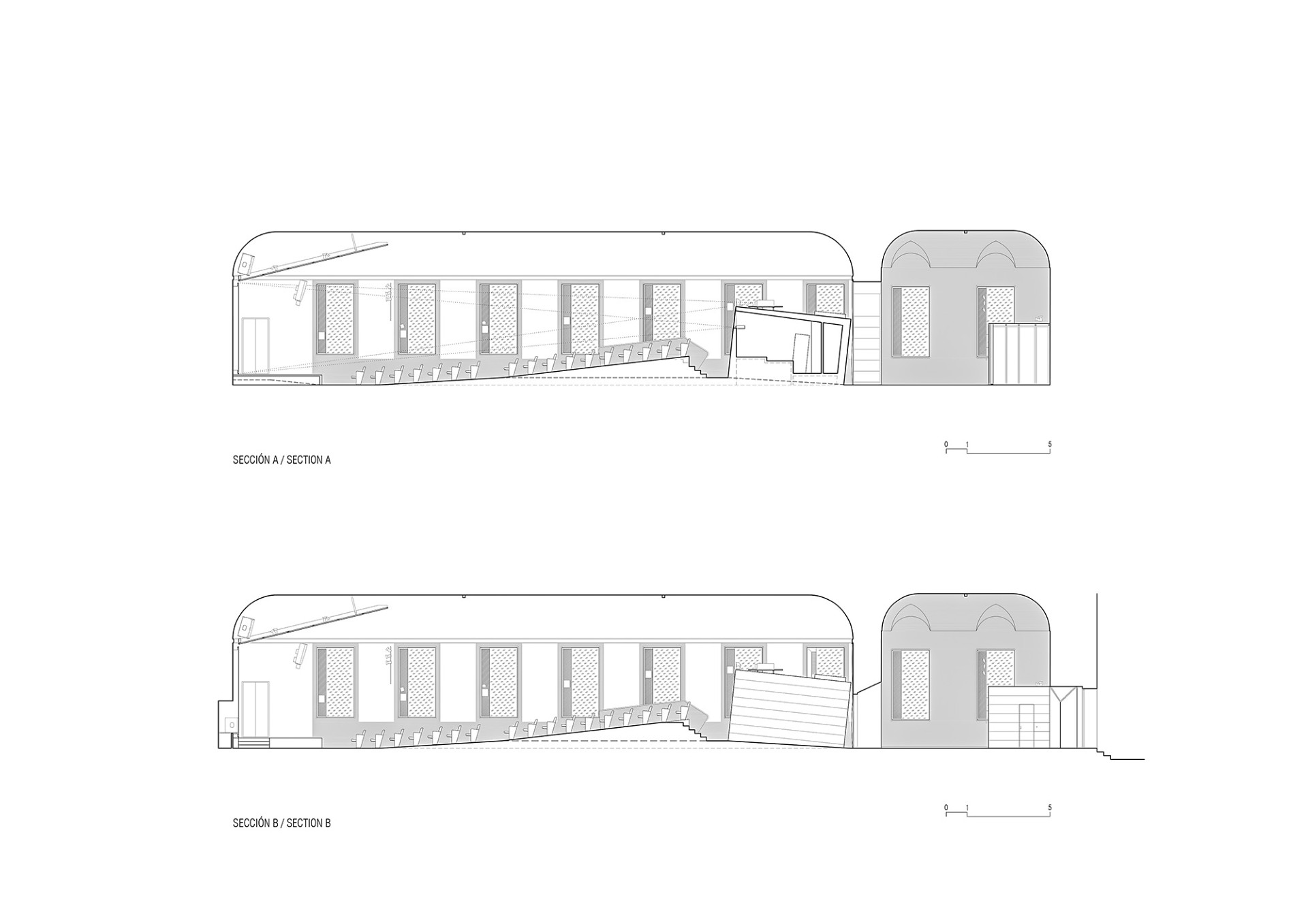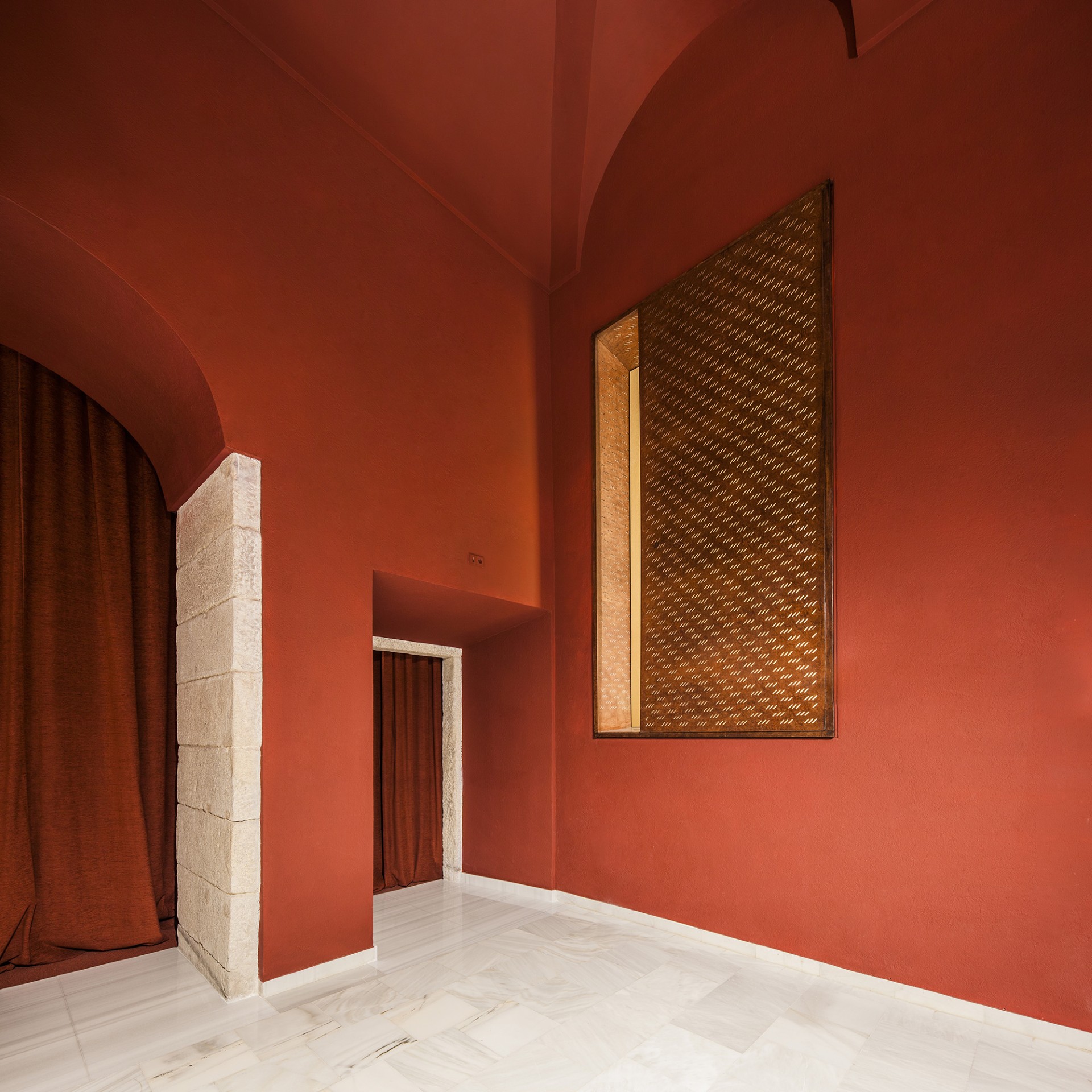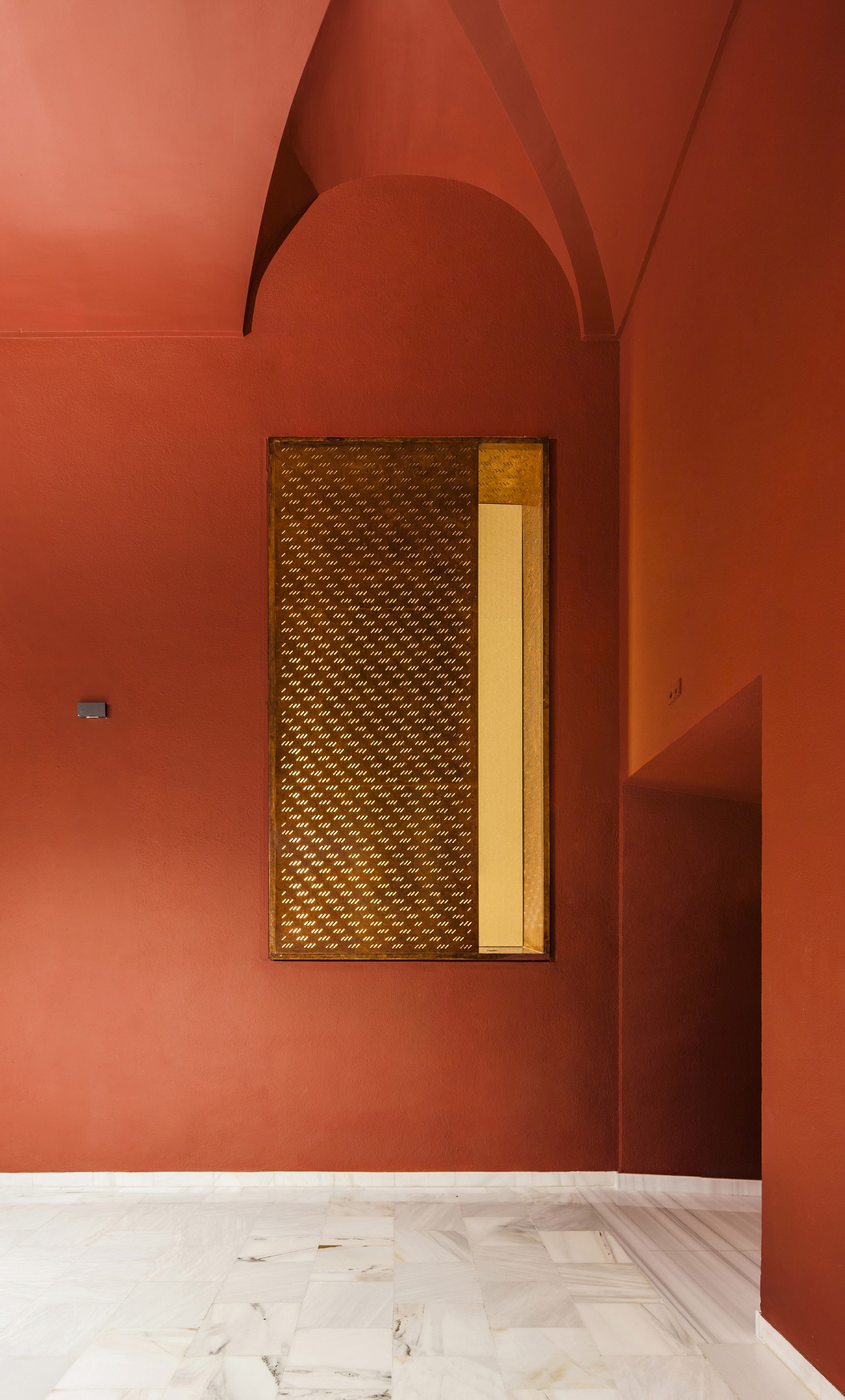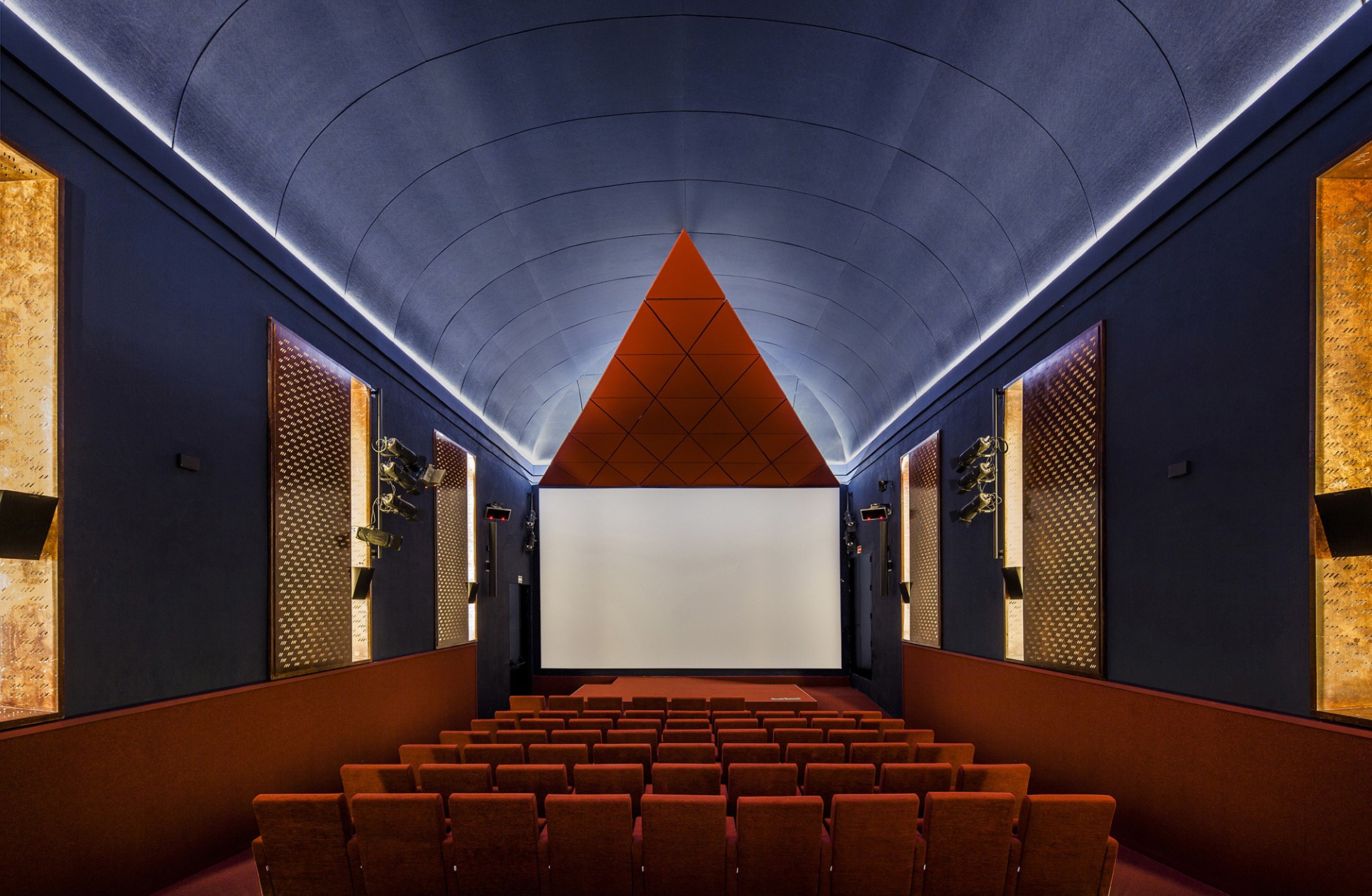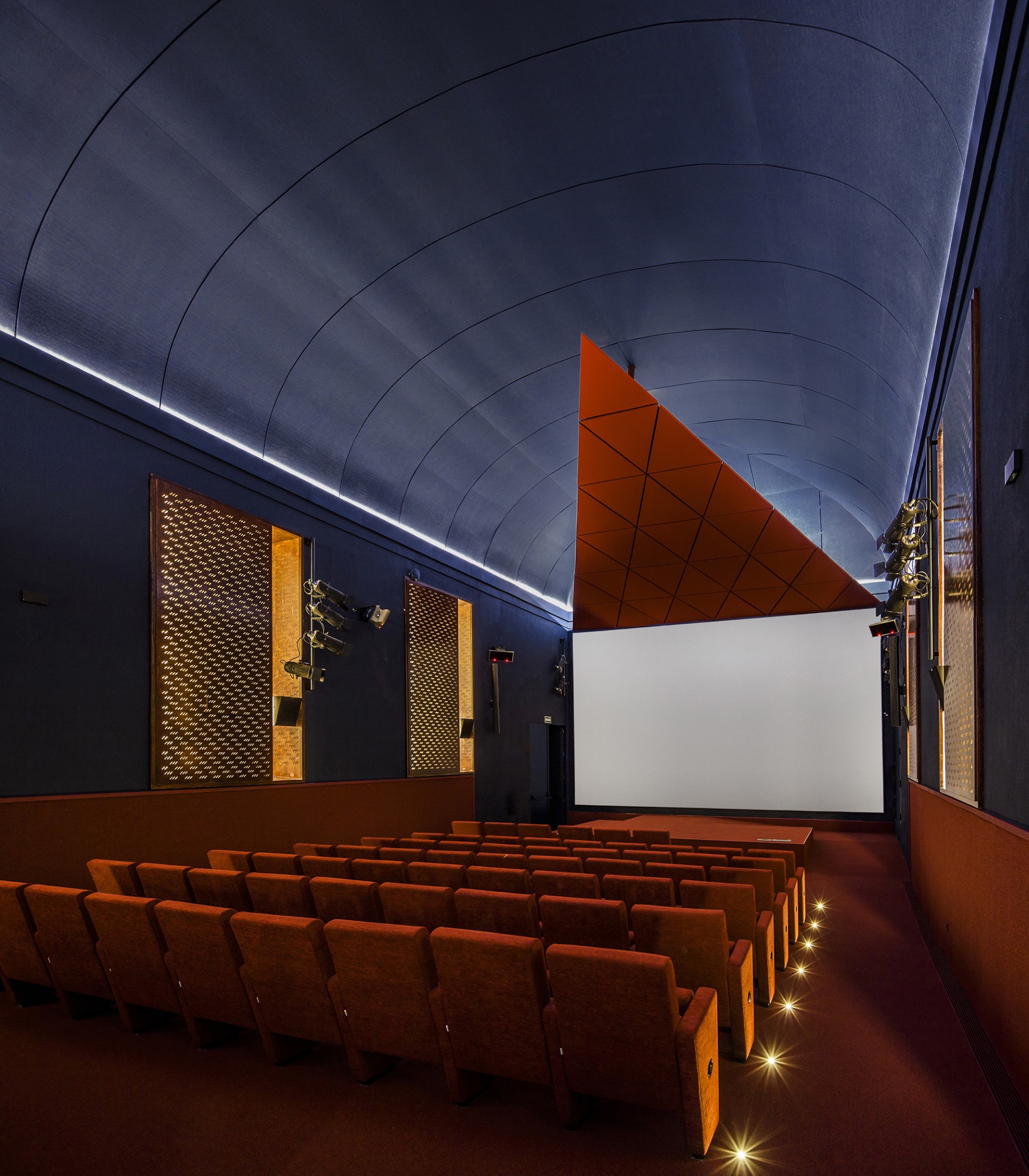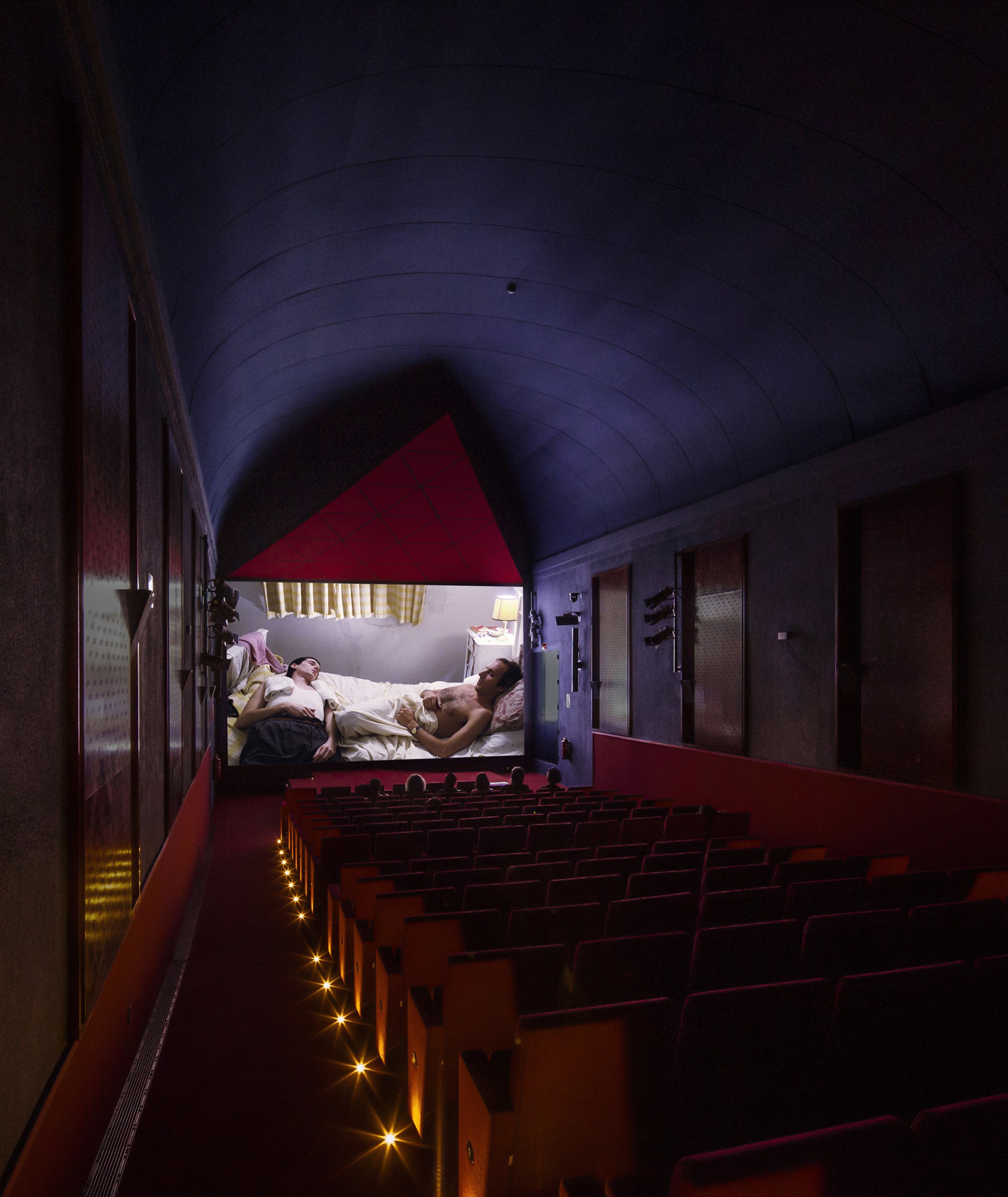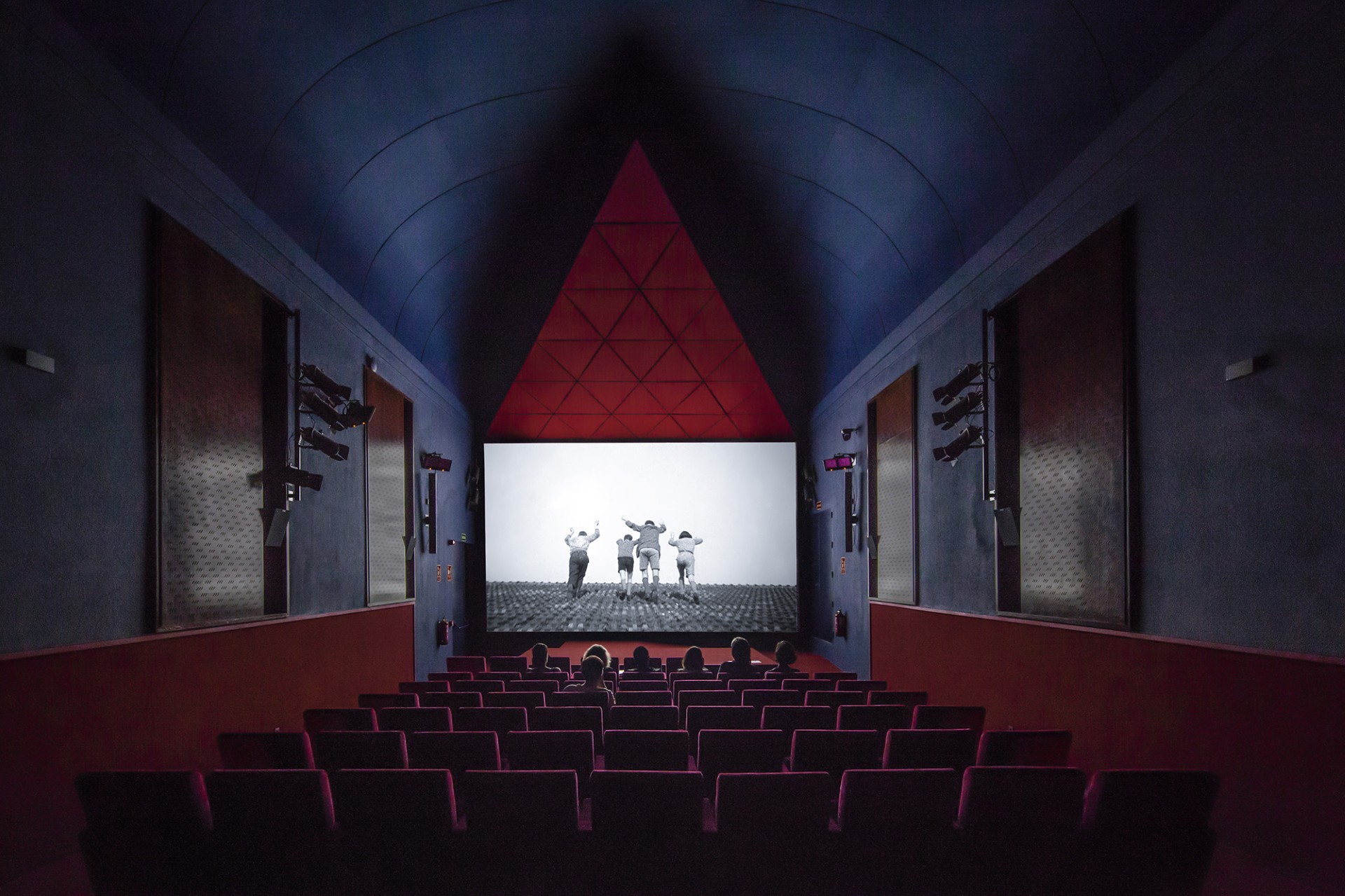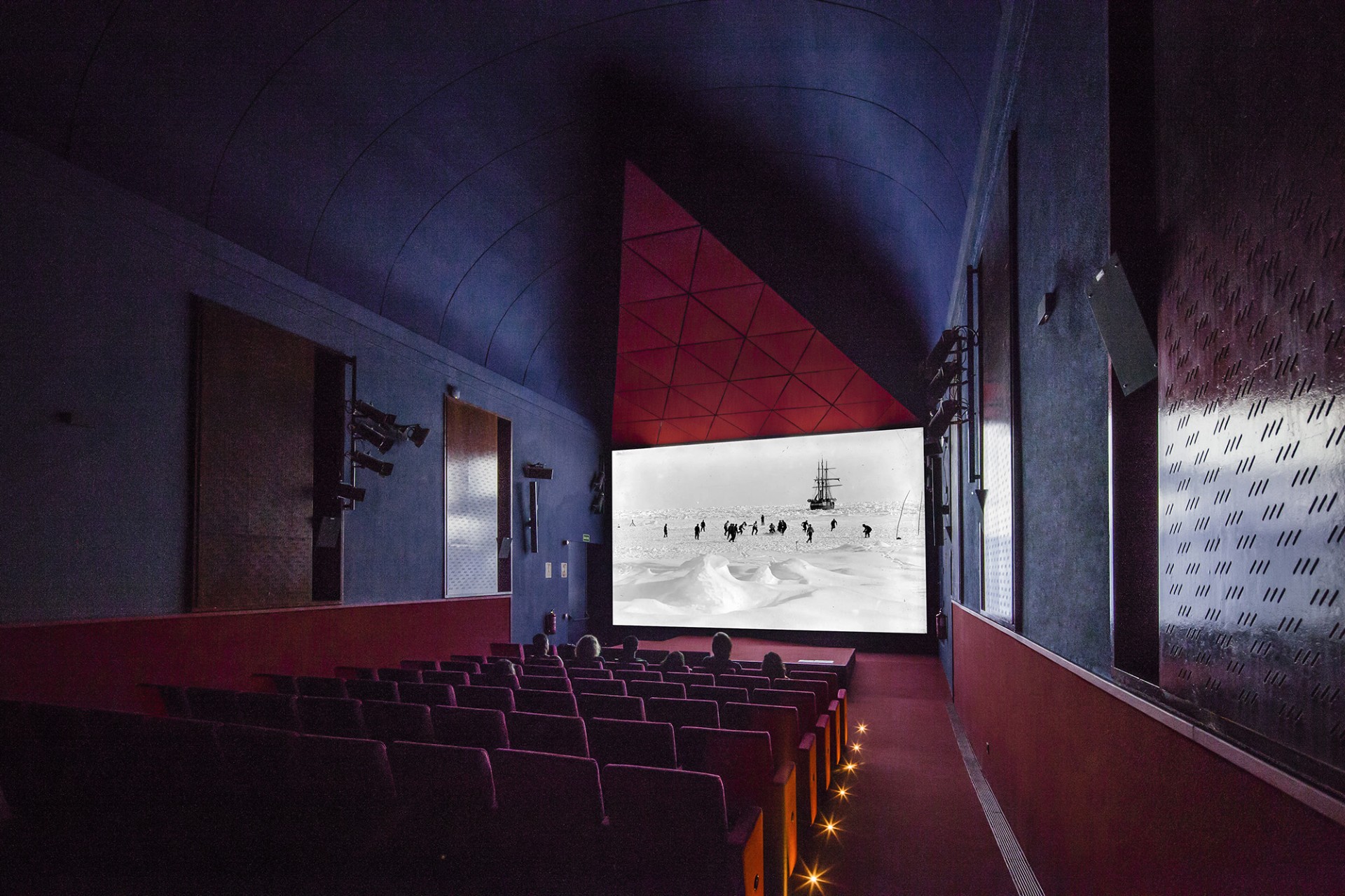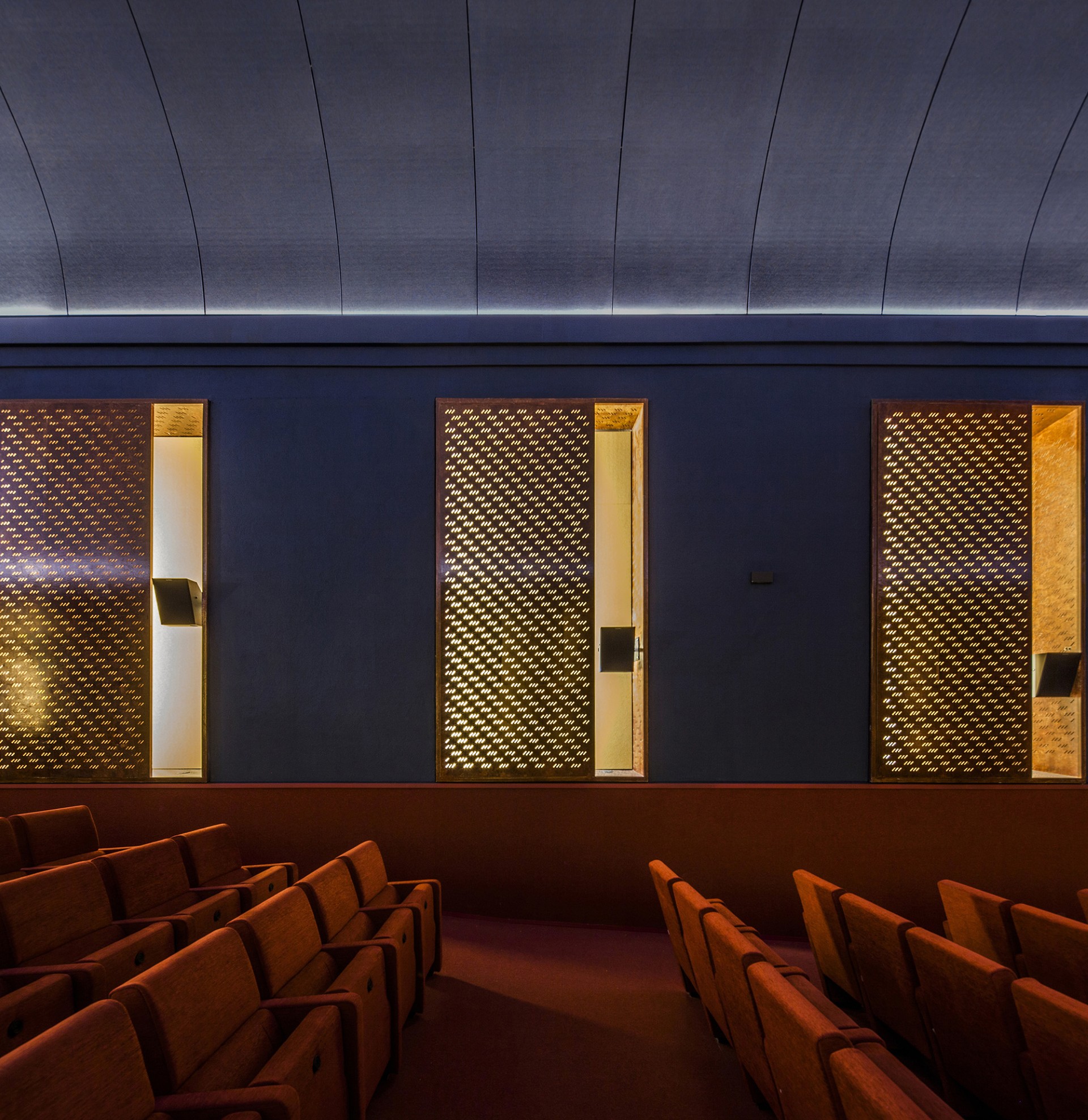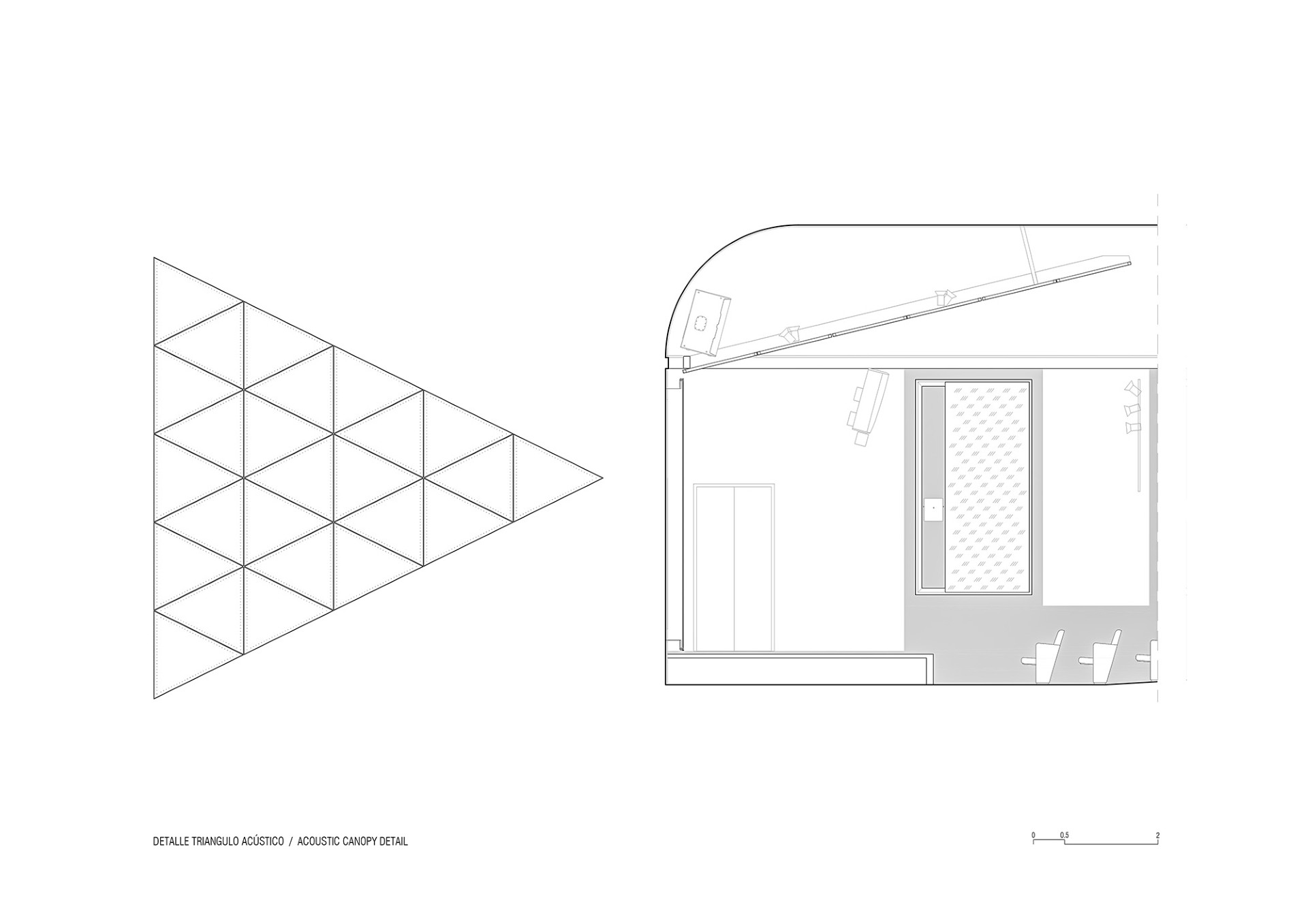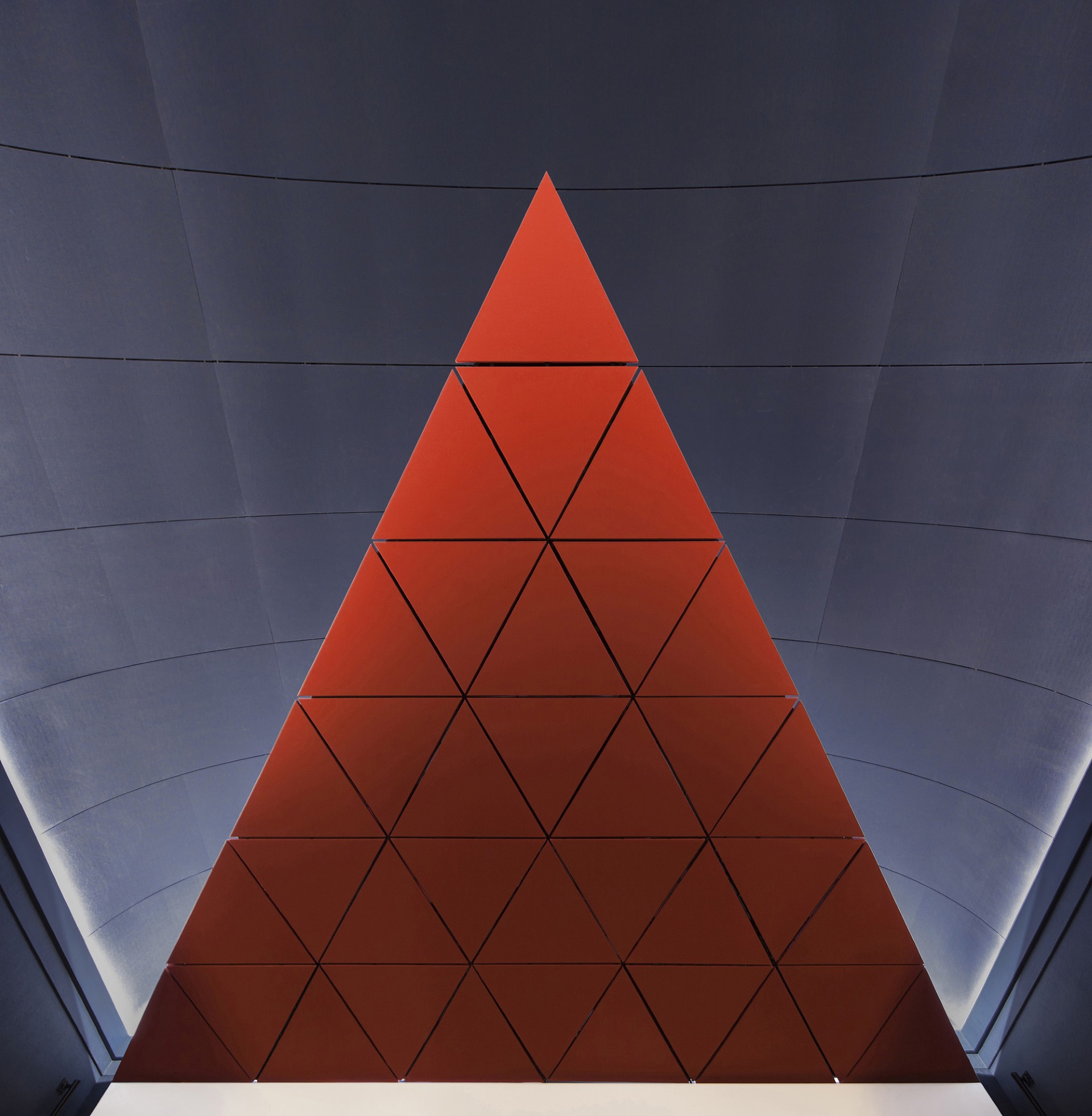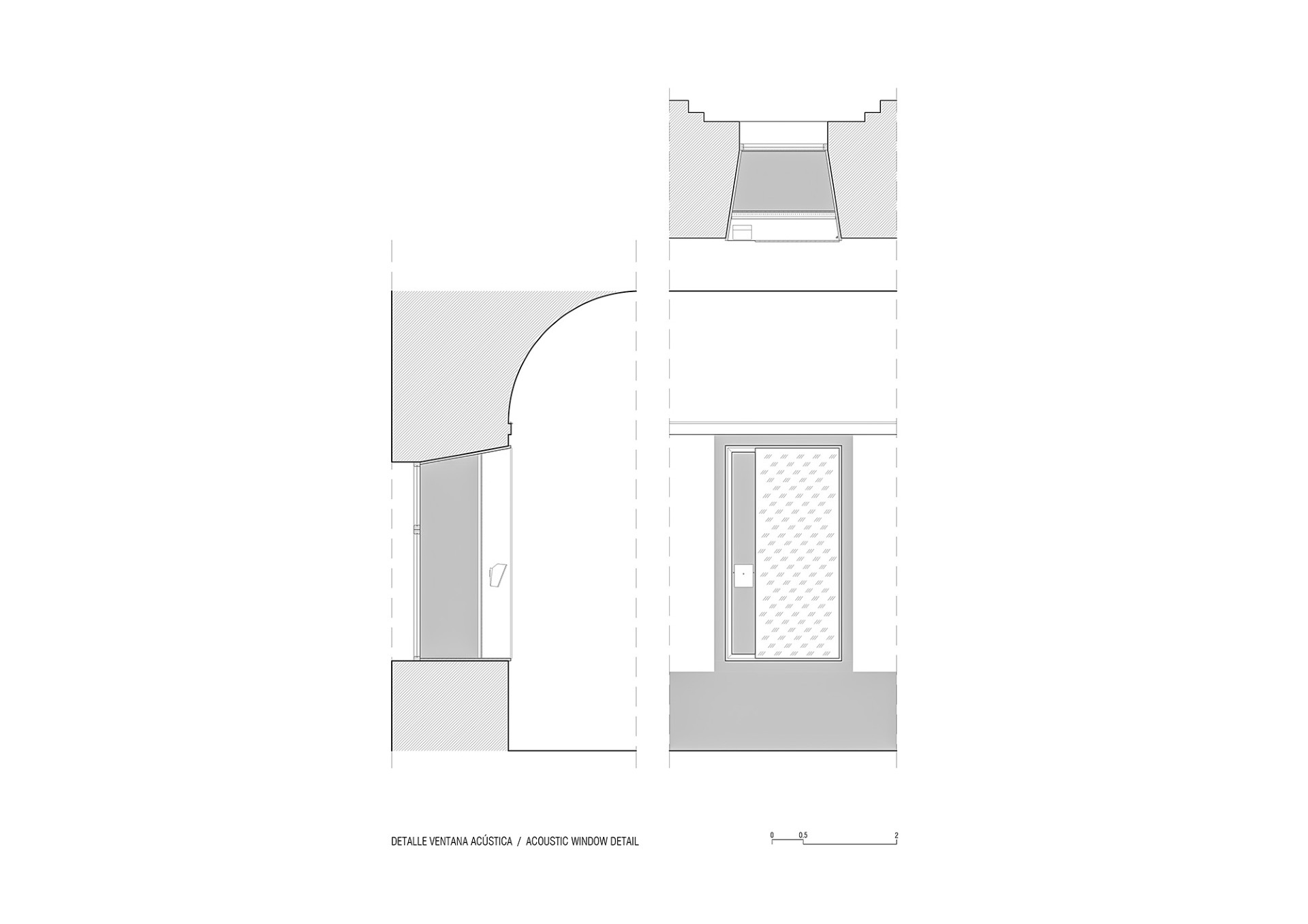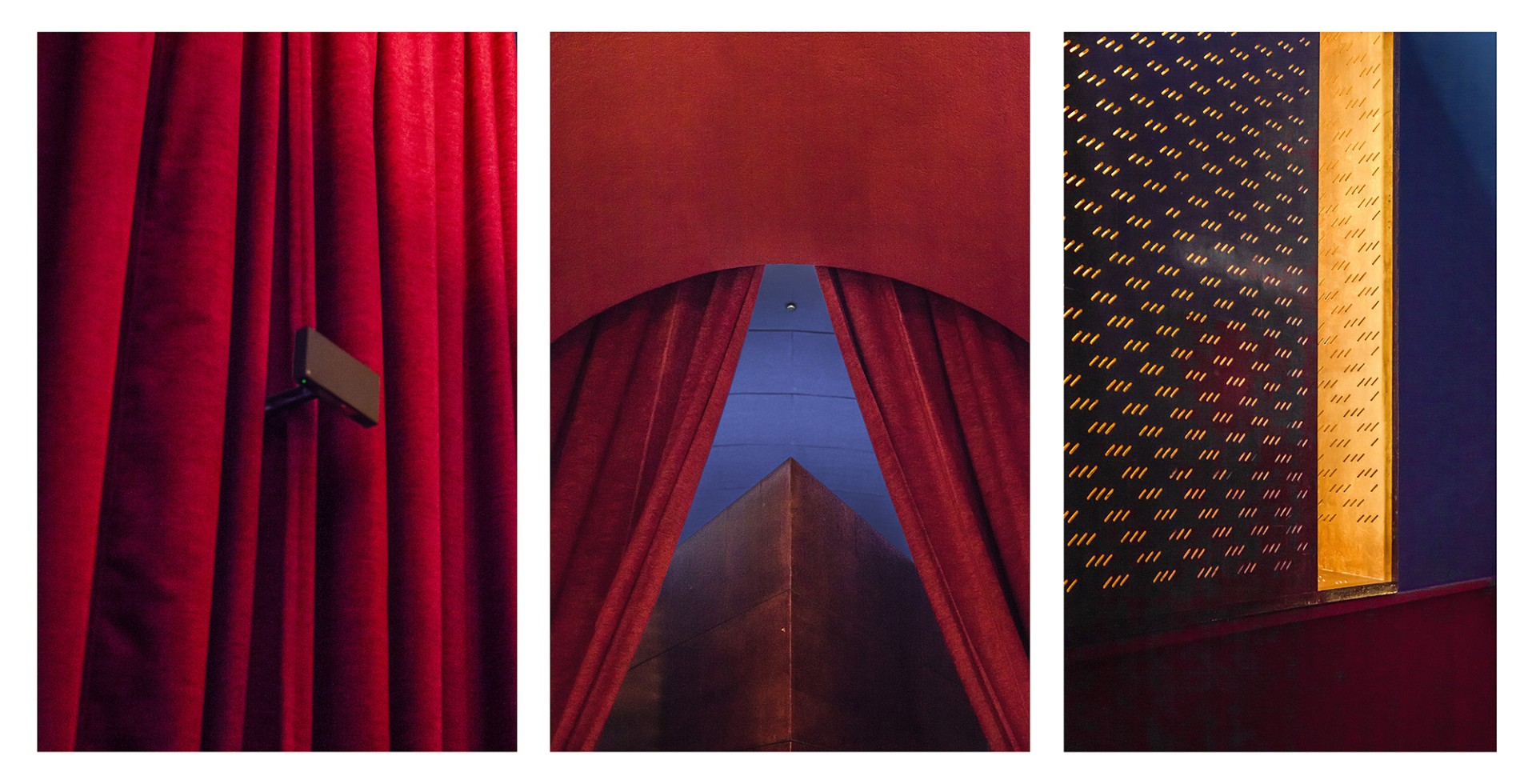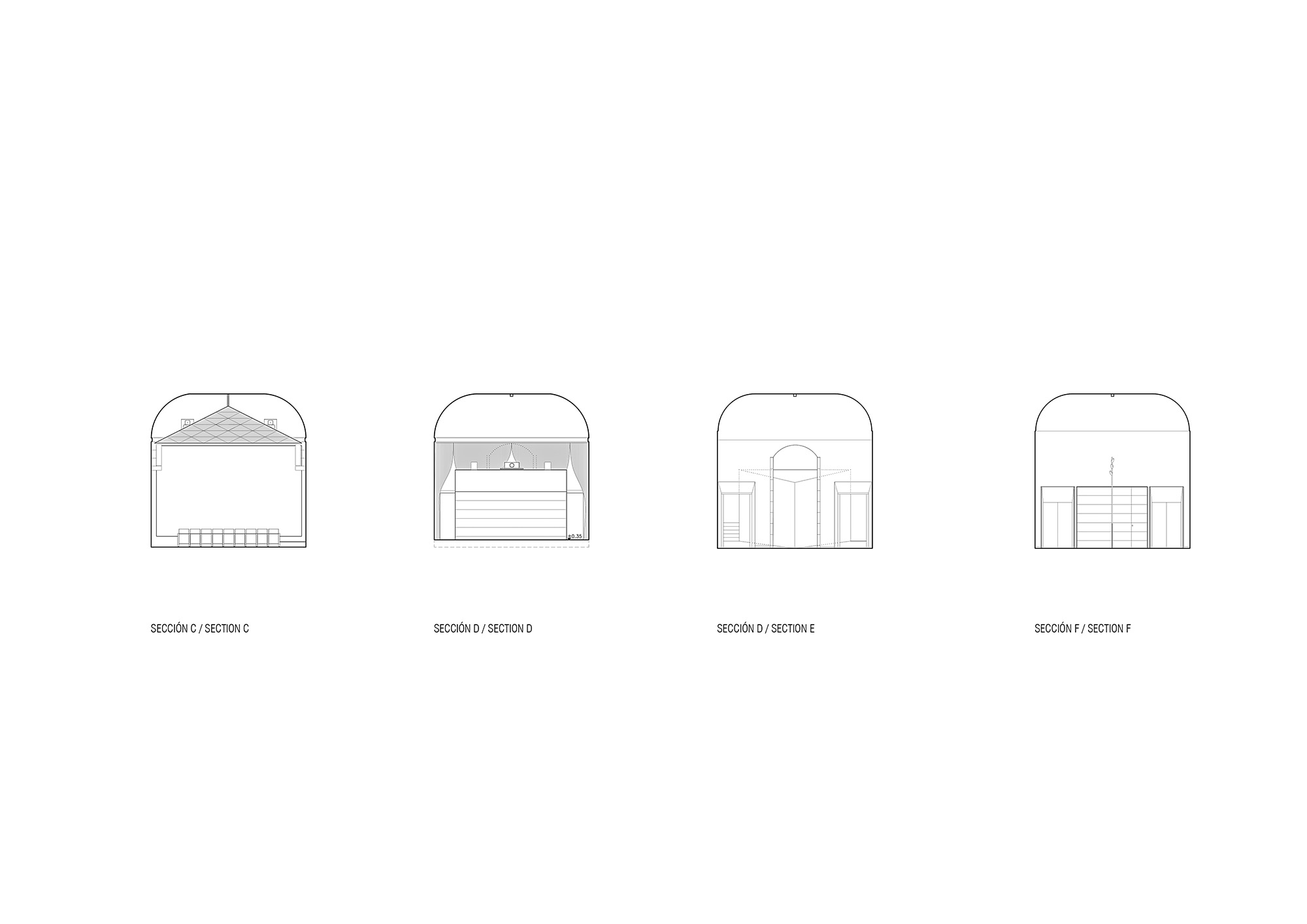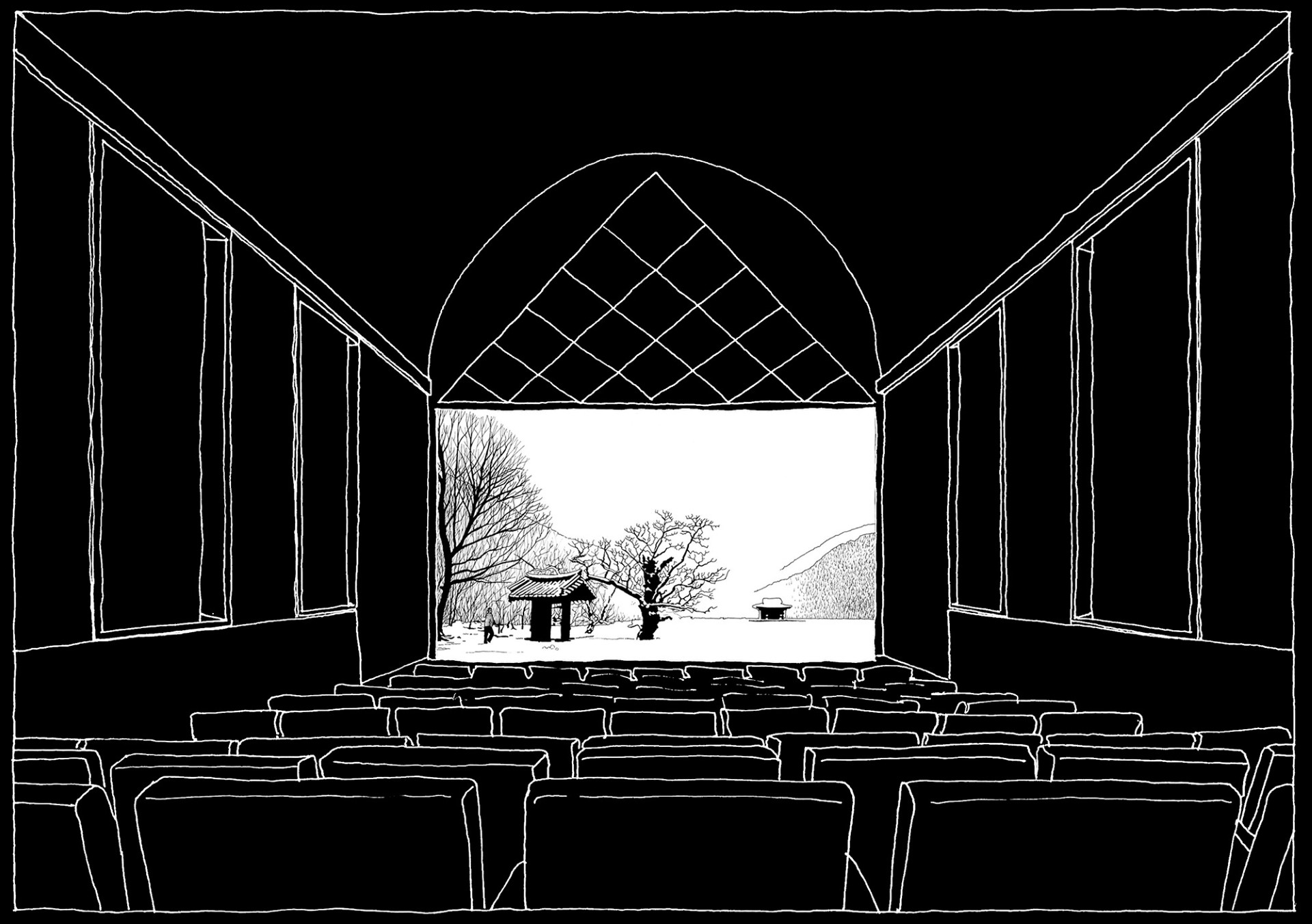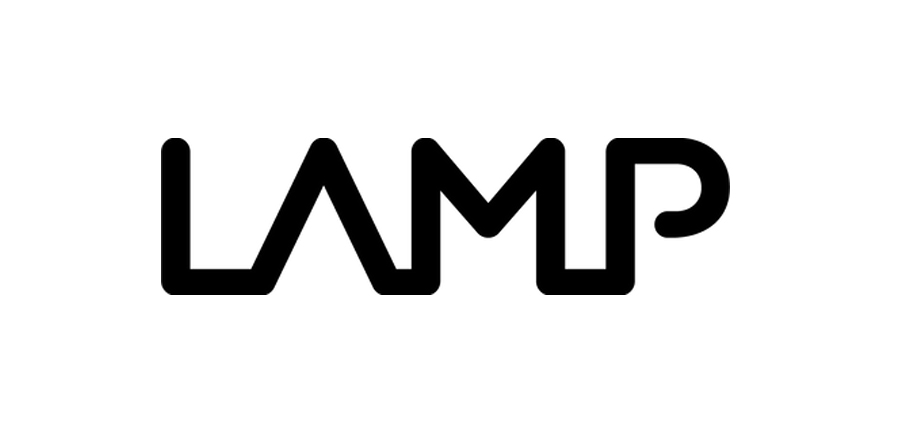The project proposes the transformation of the former auditorium of the Museo Reina Sofía into a new space for audiovisual formats. To achieve this, in addition to giving a new character to this emblematic museum space, it is necessary to modify both the entrance and the seating area, as well as intervene in the materiality of the hall to improve its acoustic performance and install a new image and sound system.
The Museo Nacional Centro de Arte Reina Sofía is located in the building of the former General Hospital of Madrid, an 18th-century construction designed by José de Hermosilla and Francisco Sabatini. After several interventions, and following its designation as a Cultural Heritage Site with the status of Monument, it was inaugurated as a museum in 1992 and expanded in 2005, and it is currently one of the leading centers for modern and contemporary art in Europe.
The building of the former hospital, known as the Sabatini building, included an auditorium built in 1987 by Jaume Bach and Gabriel Mora, which served all of the museum’s conferences and events. With the expansion of the center, the institution gained two new auditoriums, which allowed the existing one to be converted into a cinema and auditorium.
The proposal seeks to preserve the iconic elements of Bach and Mora’s project: the triangular projection room that organizes and divides circulation at the entrance, and the triangle suspended above the stage, which functioned as a reverberation device. In contrast, the existing translation booths are removed, as current technology does not require a dedicated space; the seating area is modified to increase its slope and improve visibility of the screen, and the emblematic suspended triangle is transformed into a large acoustic screen that conceals the central speakers.
With this strategy, the aim is to adapt the hall’s conditions to its new use while maintaining the character of “geometric objects” arranged under a large vaulted space, as envisioned in the original project: a starry sky under which different events were organized.
The old hospital windows were closed with wooden panels featuring carved motifs evoking raindrops, subtly generating the feeling of being outdoors. The project reinforces this idea by establishing blue as the color of the vault (the night sky) and reclaiming the classic red of many cinemas and theaters throughout architectural history, with a special reference to Erik Gunnar Asplund’s Skandia Cinema in Stockholm and the Cine Doré in Madrid.
The blue of the sky and the red of the carpet recall classical theaters, establishing a link between the function of the space (which requires dark colors to avoid reflections) and the tradition of cinema and theater, especially since it is located in a neoclassical building. To mediate between these two tones, the absorbent surfaces placed in the window niches become points of soft lighting, highlighting these openings and turning them into outdoor-like volumes, enhancing the sensation of being outside.
In the entrance lobby, a new element is added: a triangular storage unit that dialogues with the geometry of the projection booth helps guide circulation toward the back of the hall. The existing serliana is preserved, and by unifying all surfaces in a single red tone, it appears as a distintive element that welcomes visitors and reveals the new hall behind dense velvet curtains, evoking wide cinematic universes ranging from Luis Buñuel to David Lynch, from Pedro Almodóvar to Aki Kaurismäki.
